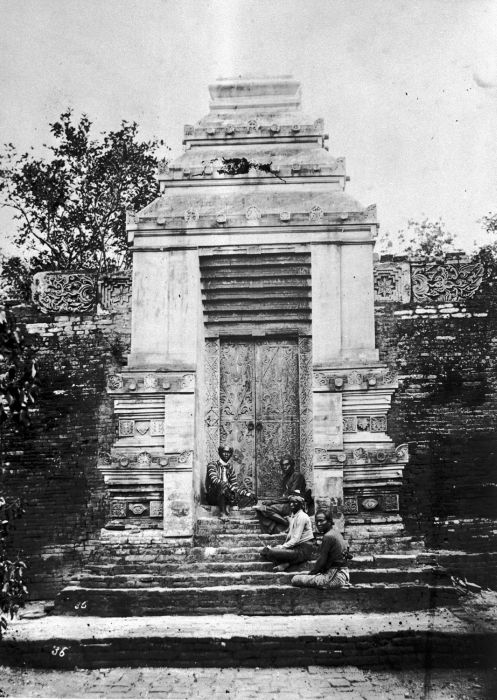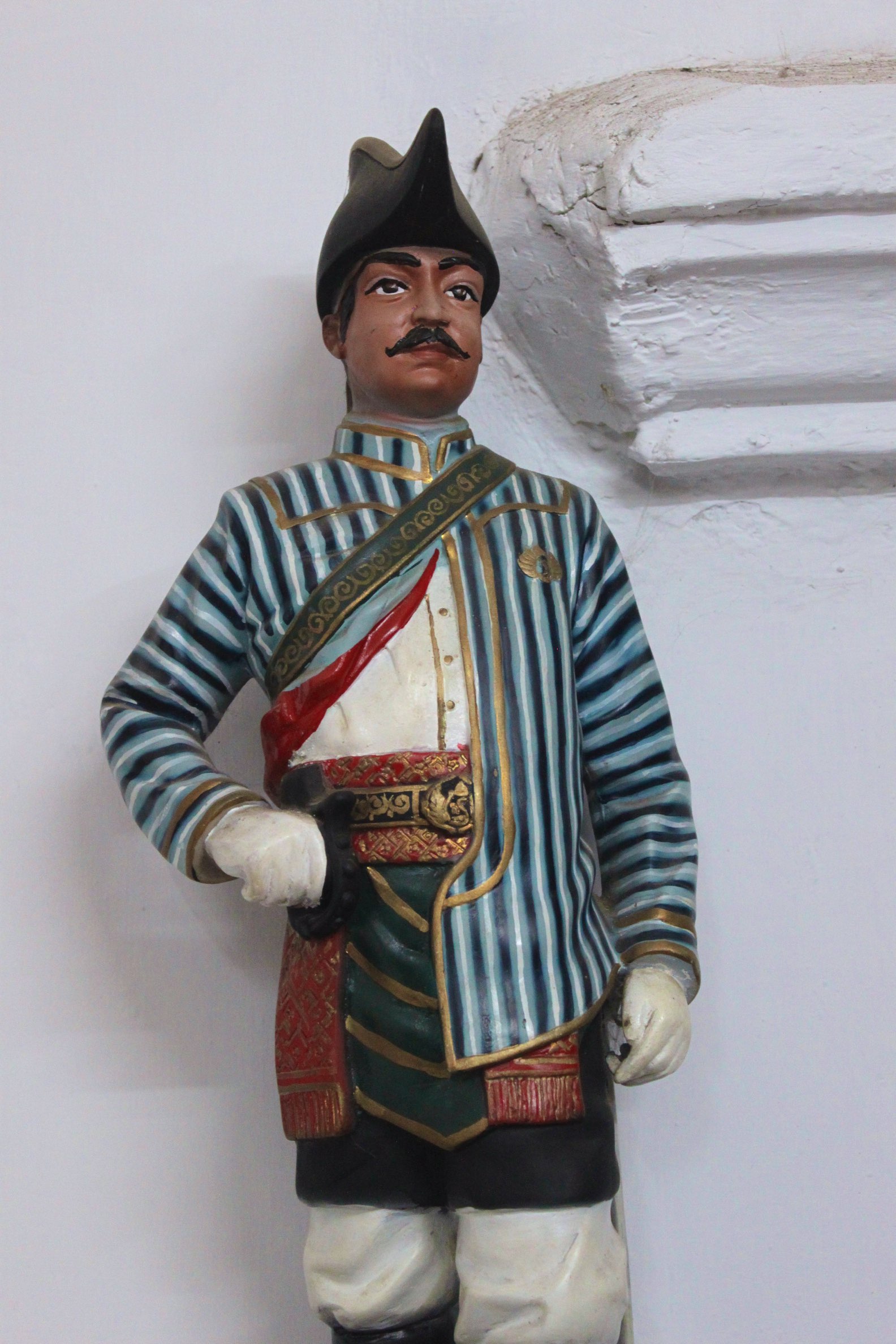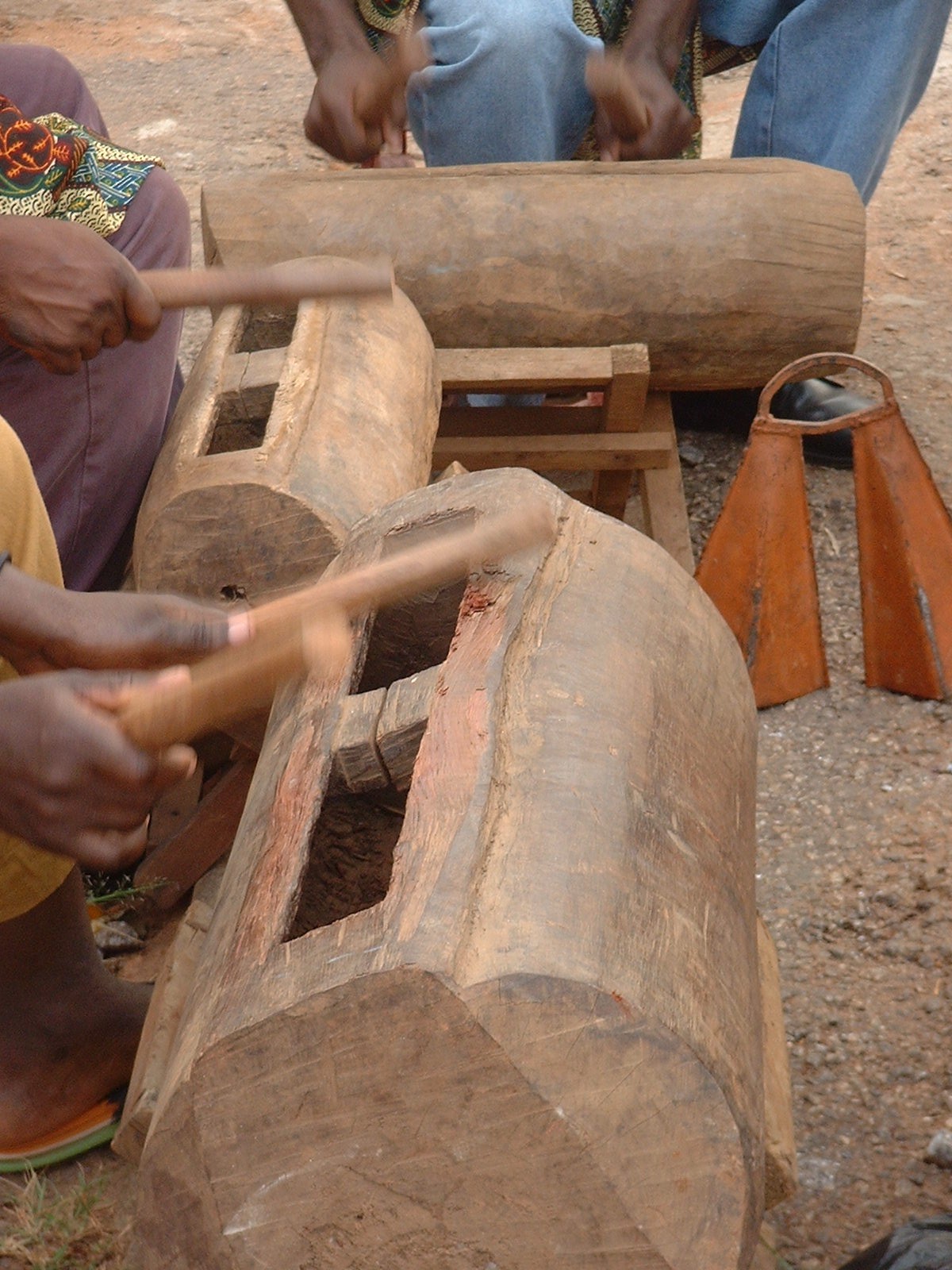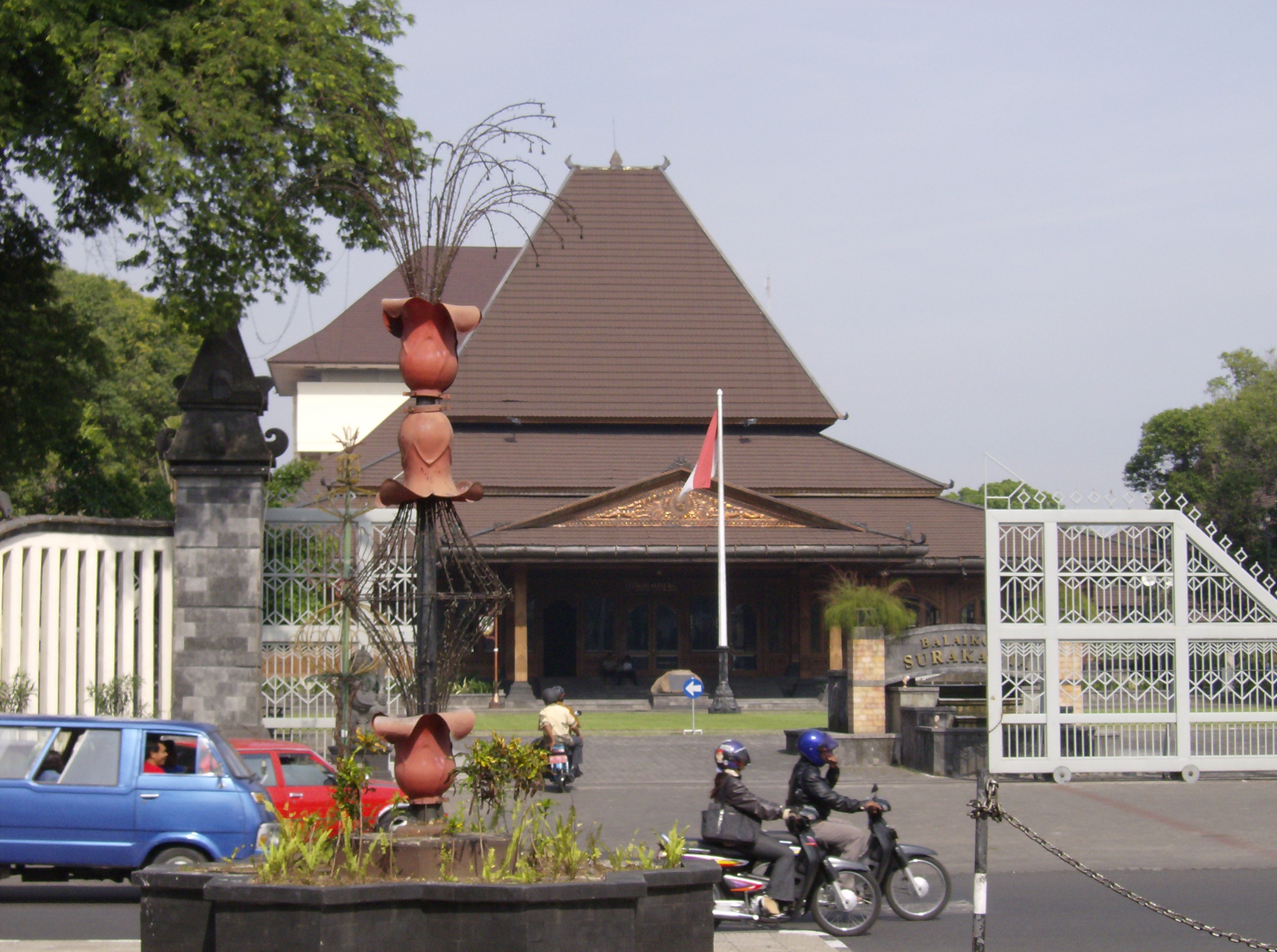|
Sekaten
Sekaten (originated from Arabic word: '' Syahadatain'') is a week-long Javanese traditional ceremony, festival, fair and pasar malam (night market) commemorating Maulid (the birthday of the Islamic prophet Muhammad), celebrated annually started on 5th day through the 12th day of (Javanese Calendar) Mulud month (corresponding to Rabi' al-awwal in Islamic Calendar). The festivities usually took place in northern ''alun-alun'' (square) in Yogyakarta, and simultaneously also celebrated in northern alun-alun of Surakarta. This ceremony originally were initiated by Sultan Hamengkubuwana I, the founder of Yogyakarta Sultanate to promote the Islamic faith. Gamelan Sekaten On day one, the ceremony commences after the Isya evening prayer with a royal procession of royal guards and 'abdi dalem' court officials accompanying two sets of centuries old gamelan traditional music instruments, the Kyai Nogo Wilogo and Kyai Guntur Madu. The royal procession, led by the Sultan and Governor of Y ... [...More Info...] [...Related Items...] OR: [Wikipedia] [Google] [Baidu] |
Hamengkubuwana I
Hamengkubuwono I (Javanese script: ꦱꦸꦭ꧀ꦠꦤ꧀ꦲꦩꦼꦁꦏꦸꦧꦸꦮꦤꦆ, Bahasa Jawa: ''Sri Sultan Hamengkubuwono I''), born Raden Mas Sujana (Kartasura, 16 August 1717Yogyakarta, 24 March 1792), was the first sultan of Yogyakarta. He reigned from 1755 to 1792. References Further reading * Ricklefs, M.C. (1974) ''Jogjakarta under Sultan Mangkubumi, 1749–1792: A History of the Division of Java''. London Oriental Series, vol. 30. London: Oxford University Press Oxford University Press (OUP) is the university press of the University of Oxford. It is the largest university press in the world, and its printing history dates back to the 1480s. Having been officially granted the legal right to print books ... (Revised Indonesian edition 2002). * Ricklefs MC. 2001. ''A History of Modern Indonesia: 3rd Edition''. Palgrave and Stanford University Press. * Purwadi. 2007. ''Sejarah Raja-Raja Jawa''. Yogyakarta: Media Ilmu. * Heryanto F. 2004. ''Mengenal Keraton ... [...More Info...] [...Related Items...] OR: [Wikipedia] [Google] [Baidu] |
Tourist Attractions In Yogyakarta
Tourism is travel for pleasure or business; also the theory and practice of touring, the business of attracting, accommodating, and entertaining tourists, and the business of operating tours. The World Tourism Organization defines tourism more generally, in terms which go "beyond the common perception of tourism as being limited to holiday activity only", as people "travelling to and staying in places outside their usual environment for not more than one consecutive year for leisure and not less than 24 hours, business and other purposes". Tourism can be domestic (within the traveller's own country) or international, and international tourism has both incoming and outgoing implications on a country's balance of payments. Tourism numbers declined as a result of a strong economic slowdown (the late-2000s recession) between the second half of 2008 and the end of 2009, and in consequence of the outbreak of the 2009 H1N1 influenza virus, but slowly recovered until the COVID-19 p ... [...More Info...] [...Related Items...] OR: [Wikipedia] [Google] [Baidu] |
Javanese Culture
Javanese culture is the culture of the Javanese people. Javanese culture is centered in the provinces of Central Java, Yogyakarta and East Java in Indonesia. Due to various migrations, it can also be found in other parts of the world, such as Suriname (where 15% of the population are of Javanese descent), the broader Indonesian archipelago region, Cape Malay, Malaysia, Singapore, Netherlands and other countries. The migrants bring with them various aspects of Javanese cultures such as music, traditional dances and art of shadow play. The migration of Javanese people westward has created the coastal Javanese culture that is distinct from inland Sundanese culture in West Java and Banten. Being the largest ethnic group, the Javanese culture and people influence Indonesian politics and culture, a process sometimes described as Javanisation. Literature Javanese literature tradition is among the earliest and the oldest surviving literature traditions in Indonesia. The transla ... [...More Info...] [...Related Items...] OR: [Wikipedia] [Google] [Baidu] |
Mataram Sultanate
The Sultanate of Mataram () was the last major independent Javanese kingdom on the island of Java before it was colonised by the Dutch. It was the dominant political force radiating from the interior of Central Java from the late 16th century until the beginning of the 18th century. Mataram reached its peak of power during the reign of Sultan Agung Anyokrokusumo (), and began to decline after his death in 1645. By the mid-18th century, Mataram lost both power and territory to the Dutch East India Company (Dutch: ''Vereenigde Oost-Indische Compagnie''; ''VOC''). It had become a vassal state of the company by 1749. Etymology The name ''Mataram'' itself was never the official name of any polity, as the Javanese often refer to their realm simply as ''Bhumi Jawa'' or ''Tanah Jawi'' ("Land of Java"). ''Mataram'' refers to the historical areas of plains south of Mount Merapi around present-day Muntilan, Sleman, Yogyakarta, and Prambanan. More precisely, it refers to the Kota Gede ... [...More Info...] [...Related Items...] OR: [Wikipedia] [Google] [Baidu] |
Pakualaman
The Duchy of Pakualaman ( jv, ꦏꦢꦶꦥꦠꦺꦤ꧀ꦦꦏꦸꦮꦭꦩ꧀ꦩꦤ꧀, Kadipatèn Pakualaman; also written Paku Alaman; Dutch-spelling: Pakoe-alaman) is a minor Javanese princely state within the Sultanate of Yogyakarta.} It was created in 1812 when Natakusuma (later Duke Paku Alam I) was rewarded for helping the British quell the conflict in Yogyakarta in June 1812. It became the mirror-image of Mangkunegaran in the territory of the Surakarta Sunanate. A Pakualaman Corps of 100 cavalry (later 50 cavalry and 100 infantry) was established, but was never to become as significant as the Mangkunegaran Legion, and disbanded in 1892. Due to Paku Alam VIII's role in the Indonesian independence movement, a law was passed to allow the position of vice-governor of the Yogyakarta Special Region to be filled hereditarily by the reigning Duke Paku Alam at any particular time, while the Sultans of Yogyakarta fills the role of Governor on hereditary basis. Etymology The nam ... [...More Info...] [...Related Items...] OR: [Wikipedia] [Google] [Baidu] |
His Majesty's Kraton Guard Regiment
The Yogyakarta Kraton Guards ( Javanese: ꦥꦿꦗꦸꦫꦶꦠ꧀ ꦏꦺꦫꦠꦺꦴꦤ꧀ ꦔꦪꦺꦴꦒꦾꦏꦂꦠ ꦲꦢꦶꦤꦶꦔꦿꦠ꧀, Indonesian: ''Prajurit Keraton Ngayogyakarta Hadiningrat'') are the contingents of soldiers guarding the Kraton Ngayogyakarta Hadiningrat, the official residence of the Sultans of Yogyakarta. They serve ceremonial and security functions. By tradition, the reigning Sultan of Yogyakarta serves as Colonel-in-chief of the Guards. History The Yogyakarta Kraton Guards were formed during the reign of Hamengkubuwono I around the seventeenth century.OBYEK PENELITIAN http://elib.unikom.ac.id/ The soldiers of the infantry and cavalry troops used firearms, in the form of rifles and cannons. For about half a century, the Kraton Guards were strong, ... [...More Info...] [...Related Items...] OR: [Wikipedia] [Google] [Baidu] |
Wajik
''Wajik'' or ''wajid'', also known as ''pulut manis'', is a traditional glutinous sweet made with rice, sugar and coconut milk. It is an Indonesian '' kue'', and a '' kuih'' of Brunei, Singapore and Malaysia (especially in the state of Sabah). Definition The official Indonesian dictionary describes wajik as a confectionery made from a mixture of sticky rice, sugar, and coconut milk and cut into diamond shapes (rhombus or parallelogram). Ingredients and shapes The main ingredients of wajik are glutinous rice, palm sugar, and coconut milk. The high content of sugar serves as a natural preservative since sugar inhibits the growth of microbes. A correctly produced and packaged wajik could last for up to two weeks. To enhance the aroma, wajik is often enhanced with aromatic ingredients such as pandanus, vanilla, or brown sugar and durian. A variant called ''wajik kelapa'' is uses coconut and palm sugar. Wajik have various shapes, but the most famous one is the rhombus or paralle ... [...More Info...] [...Related Items...] OR: [Wikipedia] [Google] [Baidu] |
Slit Drum
A slit drum or slit gong is a hollow percussion instrument. In spite of the name, it is not a true drum but an idiophone, usually carved or constructed from bamboo or wood into a box with one or more slits in the top. Most slit drums have one slit, though two and three slits (cut into the shape of an "H") occur. If the resultant tongues are different width or thicknesses, the drum will produce two different pitches. It is used throughout Africa, Southeast Asia, and Oceania. In Africa such drums, strategically situated for optimal acoustic transmission (e.g., along a river or valley), have been used for long-distance communication. The ends of a slit drum are closed so that the shell becomes the resonating chamber for the sound vibrations created when the tongues are struck, usually with a mallet. The resonating chamber increases the volume of the sound produced by the tongue and presents the sound through an open port. If the resonating chamber is the correct size for the pitch b ... [...More Info...] [...Related Items...] OR: [Wikipedia] [Google] [Baidu] |
Islamic
Islam (; ar, ۘالِإسلَام, , ) is an Abrahamic monotheistic religion centred primarily around the Quran, a religious text considered by Muslims to be the direct word of God (or '' Allah'') as it was revealed to Muhammad, the main and final Islamic prophet.Peters, F. E. 2009. "Allāh." In , edited by J. L. Esposito. Oxford: Oxford University Press. . (See alsoquick reference) " e Muslims' understanding of Allāh is based...on the Qurʿān's public witness. Allāh is Unique, the Creator, Sovereign, and Judge of mankind. It is Allāh who directs the universe through his direct action on nature and who has guided human history through his prophets, Abraham, with whom he made his covenant, Moses/Moosa, Jesus/Eesa, and Muḥammad, through all of whom he founded his chosen communities, the 'Peoples of the Book.'" It is the world's second-largest religion behind Christianity, with its followers ranging between 1-1.8 billion globally, or around a quarter of the world's po ... [...More Info...] [...Related Items...] OR: [Wikipedia] [Google] [Baidu] |
Yogyakarta Sultanate
The Sultanate of Yogyakarta ( jv, ꦏꦱꦸꦭ꧀ꦠꦤ꧀ꦤꦤ꧀ꦔꦪꦺꦴꦒꦾꦏꦂꦡꦲꦢꦶꦤꦶꦔꦿꦠ꧀, Kasultanan Ngayogyakarta Hadiningrat ; ) is a Javanese monarchy in Yogyakarta Special Region, in the Republic of Indonesia. The current head of the Sultanate is Hamengkubuwono X. Yogyakarta existed as a state since 1755 on the territory of modern Indonesia in the central part of Java Island. The Sultanate became the main theatre of military operations during the Java War of 1825–1830, following which a significant part of its territory was annexed by the Dutch, and the degree of autonomy was significantly curtailed. In 1946–1948, during the war of independence of Indonesia, the capital of the republic was transferred to the territory of the sultanate, in the city of Yogyakarta. In 1950, Yogyakarta, along with the Principality of Pakualaman became part of Indonesia, with the former royal realms united as a Special Region, with equal status to ... [...More Info...] [...Related Items...] OR: [Wikipedia] [Google] [Baidu] |
Surakarta
Surakarta ( jv, ꦯꦸꦫꦏꦂꦠ), known colloquially as Solo ( jv, ꦱꦭ; ), is a city in Central Java, Indonesia. The 44 km2 (16.2 sq mi) city adjoins Karanganyar Regency and Boyolali Regency to the north, Karanganyar Regency and Sukoharjo Regency to the east and west, and Sukoharjo Regency to the south. On the eastern side of Solo lies Solo River (Bengawan Solo). Its built-up area, consisting of Surakarta City and 59 districts spread over seven regencies ("Greater Solo Area", formerly Special Region of Surakarta), was home to 3,649,254 inhabitants as of 2010 census, around half million of which reside in the city proper. Surakarta is the birthplace of the current President of Indonesia, Joko Widodo. He served as Mayor of Surakarta from 2005 to 2012. History Hominid habitation in the region of Surakarta is evidenced from roughly one million years ago, the age of the "Java Man" skeleton found 80 kilometers upstream. Another famous early hominid from this area is called ... [...More Info...] [...Related Items...] OR: [Wikipedia] [Google] [Baidu] |






.jpg)

